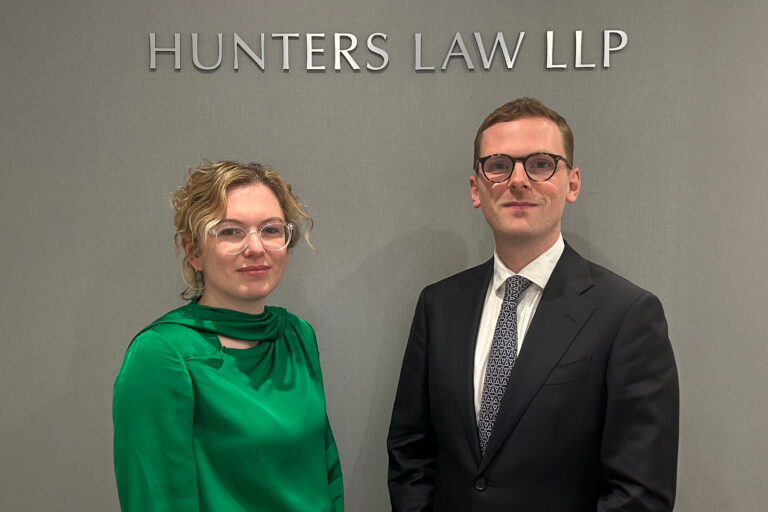Henry Hood examines how asset management during a marriage can influence a divorce settlement in the FTAdviser

This article was originally published in the FTAdviser and can be accessed here.
How asset management during a marriage can influence a divorce settlement
A High Court decision handed down earlier this year has highlighted that how parties manage or use an asset during their marriage can influence whether or not it is shared between them in the event of divorce.
The case of WX v HX [2021] EWHC 241 concerned a HNW couple divorcing after 33 years of marriage. The husband was a successful banker who had generated substantial wealth during the marriage. The wife was a homemaker who was independently wealthy as a result of gifts and inheritances from her family.
At the time of the divorce, the total assets available to the parties were in the region of £55m, of which £14m was the wife’s family wealth. The balance largely represented the product of the husband’s endeavours during the marriage; a further $50m generated by the husband had been transferred into an offshore trust for the benefit of the parties’ children.
During the marriage, the parties used the husband’s income to meet the family’s increasingly opulent standard of living and to purchase their homes and other assets. The wife’s independent wealth was held separately; although the wife used the income it generated towards her outgoings, the capital remained largely untouched.
The husband argued that all of the assets should be shared equally, meaning that each would leave the marriage with around £27.5m. The wife argued that she should retain her family assets and the remaining assets should be shared equally, meaning she would exit the marriage with £34.5m whilst the husband would be left with £20.5m. The wife largely succeeded; an outcome the husband considered wholly unfair.
The outcome reflects that the law differentiates between two classes of assets:
- matrimonial assets, which derive from the parties’ endeavours during the marriage, such as income they have earned, or the value of a business they have developed; and
- non-matrimonial assets, which derive from a source outside the marriage, including assets received by gift or inheritance, assets held by one party prior to the marriage, and income earned following separation.
The starting point on divorce is that matrimonial assets are shared equally, whereas non-matrimonial assets are retained by the spouse who brought them to the marriage. This reflects the perspective that fruits of the marital partnership belong to both parties, but that a party has no entitlement to share in assets belonging to their spouse to which they have not contributed. In the words of Mr Justice Mostyn in JL v SL (No 2) (Appeal: Non-Matrimonial Property) [2015] EWHC 360 (Fam), a claim to share non-matrimonial property would have no moral or principled foundation.
These starting points may be departed from; in particular, a court may invade a party’s non-matrimonial assets to meet the needs of the other party or any children, or to meet the terms of a nuptial agreement. Further – and of particular relevance in this case – non-matrimonial property can become matrimonialised over the course of a marriage through being mingled with matrimonial resources. Matrimonialised assets should usually be shared, to some extent at least, with the other party.
In this case, it was clear that the funds generated by the husband’s endeavours during the marriage were matrimonial and should be shared equally. The debate focused on the other assets: the wife’s family assets, and the assets the husband had prior to the marriage, which he contended were worth $10m (he was originally from the US).
Whilst the wife’s family assets had been kept separate from the family’s other resources (they had, in the words of the judge, been ring-fenced), the husband’s premarital wealth had, like the wealth he generated during the marriage, been applied towards the family’s outgoings and the acquisition of family assets. In the words of the judge, Mrs Justice Roberts: the conundrum in this case as this very long marriage now ends is how the court should fairly reflect in its award the different way in which the parties managed their wealth from the outset.
Mrs Justice Roberts went on to identify two factors that must be present for non-matrimonial assets to become matrimonialised. Firstly, they must have been physically mingled with the family’s other resources (including, for example, through the purchase of the family home, or other assets used by the whole family, or investment in a joint account); and secondly, the owning party must have through words, actions or deeds manifested an acceptance that the assets should be treated as matrimonial.
It was clear that the husband’s pre-marital assets (as well as the proceeds of sale of a property the wife had owned at the outset of the parties’ relationship) had been fully mingled with the family’s other assets and were no longer distinguishable from them; as a result, they had lost their non-matrimonial character. By contrast, £1.7m which the husband had inherited towards the end of the marriage and kept separate was held to be non-matrimonial.
The wife’s family assets had remained separate and segregated from the wider family finances throughout the marriage. She had not dipped into the capital because she considered the funds family money to be preserved and passed down through the generations. The husband accepted that there had never been an understanding between the parties that he should acquire an interest in these assets. However, he nevertheless argued that, because he had actively managed these funds for the wife, including negotiating their exit from a family trust company and relocation into a tax-efficient offshore structure, they should be treated as having been mingled.
Mrs Justice Roberts rejected the husband’s argument: there was no indication at all that the wife had intended they be treated as family assets; they were outside the financial arrangements put in place to manage the family’s domestic economy. That the husband had acted as any loving husband would by looking after the wife’s financial interests did not alter the assets’ character.
As a result, the husband retained his recent £1.7m inheritance and the wife her £14m family assets, and the matrimonial assets of £39m were divided equally. This left the husband with assets of around £21m and the wife with assets of around £33.5m.
The wife therefore emerged from the marriage significantly wealthier than the husband. The husband’s frustration was perhaps understandable: his successful career, and willingness to use the significant income it generated as well as his pre-marital assets for the benefit of the family, had enabled the wife to keep her family assets separate, retaining their non-matrimonial character. The husband’s barrister went so far as to refer to the outcome sought (and largely achieved) by the wife, as grotesque.
Yet the outcome is a direct consequence of the legal distinction between matrimonial and non-matrimonial property: the law means that where one party to a marriage has private wealth which they choose to keep separate, and the other works during the marriage to build up assets, only the latter will have to share their wealth in the event of divorce.
It seems likely that during the marriage neither party appreciated the potential future significance of their decisions as to how to manage their finances – nor indeed could they have done so during the earlier part of their marriage, when the law applicable to financial claims on divorce was very different.
Many factors will often be at play for a married couple when they are deciding how to fund a particular transaction, or how to hold their assets; the potential implications of the decision should they divorce many years in the future is not usually one of them. Yet this case illustrates the consequences of failing to have regard to this issue. Financial advisors and others involved in advising on wealth management may wish to flag the issue so that clients can take specialist advice.
Whilst considering how assets may be treated on divorce prior to or during a marriage may seem unromantic, it can help avoid unpleasant surprises or unintended results. A nuptial agreement is the best way to manage the financial consequences of marriage and of financial decisions made during the marriage, as it allows parties to agree what they consider would be fair in the event of divorce.
In a nuptial agreement, the parties can set out precisely what the financial consequences of divorce should be. Such an agreement can be entered into before or during a marriage and will generally be upheld where the parties have entered into it freely and with a full appreciation of its implications, so long as it meets the parties’ needs at the time that it comes to be implemented. If it does not meet needs, a court will likely adjust the outcome to ensure needs are met, rather than entirely disregard the agreement.
By way of example, a nuptial agreement could provide for a total separation of finances, so that the product of a party’s endeavours during the marriage (otherwise treated as matrimonial property) would not be shared on divorce; nor would inherited or any other assets. Such an approach is often preferred where each party is (or anticipates being) wealthy in their own right.
In the absence of a nuptial agreement, the parties may be able to influence through their financial management how some of their assets would be treated in the event of divorce, though to a far more limited, and less certain, extent than through a nuptial agreement.
Ultimately, ensuring that a married couple are aware of the possible implications of their financial management decisions in the event of a future divorce, will allow for comprehensive financial planning and can assist both parties in understanding their potential financial future.





